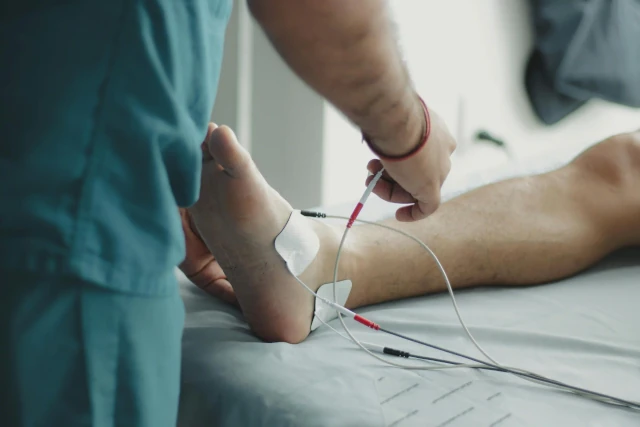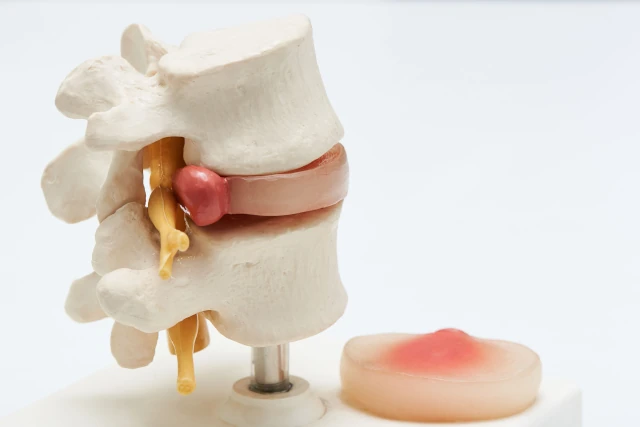
Physiotherapy Machines for Treating Back Pain
- Dr. Kirti (MPT)
Connect with our expert physiotherapist for personalized physiotherapy advice.
Back pain is a common ailment affecting millions of people worldwide, often resulting from lifestyle factors, poor posture, or underlying medical conditions. As a physiotherapist, it is crucial to understand the role of physiotherapy machines in alleviating back pain and promoting recovery. In this blog, we will explore various physiotherapy machines used for back pain treatment, their functions, and how they can help patients manage and overcome pain effectively.
Understanding Back Pain
Before diving into the machines, it’s essential to understand the common causes of back pain:
- Muscle or Ligament Strain:
Often due to heavy lifting or an awkward movement.
- Bulging or Ruptured Disks:
Disks act as cushions between the vertebrae, and when damaged, they can press on nerves.
- Arthritis:
Conditions like osteoarthritis can lead to narrowing of the space around the spinal cord.
- Skeletal Irregularities:
Conditions like scoliosis can contribute to pain.
- Inactivity
Sedentary lifestyles can weaken muscles, making them more susceptible to injury.
The Role of Physiotherapy in Back Pain Management
Physiotherapy plays a crucial role in managing back pain. It focuses on improving mobility, strengthening muscles, and reducing pain through various techniques, including manual therapy, exercise, and the use of physiotherapy machines.
Popular Physiotherapy Machines for Back Pain Treatment
- Ultrasound Therapy Machines
Ultrasound therapy is another highly effective physiotherapy treatment for back pain.
- How It Works:
This machine uses high-frequency sound waves to penetrate deep into the muscle tissues, generating heat in the affected area.
- Benefits:
The heat helps reduce inflammation, enhance blood flow, and accelerate tissue healing. It is ideal for treating soft tissue injuries and chronic back pain.
- Common Uses:
Ultrasound therapy is widely used for conditions such as lumbar strain, herniated discs, and muscle tightness.
- How It Works:
- TENS Machine for Back Pain Relief
A TENS (Transcutaneous Electrical Nerve Stimulation) machine is a popular physiotherapy device for pain management.
- How It Works:
The TENS machine sends low-voltage electrical impulses through the skin to stimulate the nerves in the affected area.
- Benefits:
These impulses help block pain signals from reaching the brain and stimulate the release of endorphins, the body natural painkillers. TENS therapy is particularly useful for chronic back pain and muscle tightness.
- Common Uses:
TENS machines are often used for conditions like lower back pain, sciatica, and muscle spasms.
- How It Works:
- Shockwave Therapy Machine for Chronic Back Pain
Shockwave therapy is a non-invasive treatment that delivers high-energy acoustic waves to the painful area.
- How It Works:
The machine emits acoustic waves that stimulate the healing process in damaged tissues.
- Benefits:
This therapy encourages tissue regeneration, breaks down scar tissue, and improves blood flow, making it highly effective for treating chronic back pain.
- Common Uses:
Shockwave therapy is suitable for conditions like tendinitis, muscle tightness, and lower back pain caused by overuse.
- How It Works:
- Spinal Traction Devices for Back Pain Relief
Spinal traction devices are used to decompress the spine and relieve back pain by applying a gentle pulling force.
- How They Work:
These devices help reduce the pressure on the spine discs and nerves, particularly beneficial for herniated discs and sciatica.
- Benefits:
By alleviating spinal compression, spinal traction can significantly reduce pain, improve mobility, and support the natural healing process.
- Common Uses:
Traction therapy is ideal for sciatica, slipped discs, and degenerative disc disease.
- How They Work:
- Laser Therapy Machines for Lower Back Pain
Laser therapy uses low-level laser light to penetrate deep into the tissues.
- How It Works:
The machine emits light energy that is absorbed by the cells, promoting cellular repair and regeneration.
- Benefits:
Laser therapy helps reduce pain, inflammation, and stiffness, making it effective for both acute and chronic back pain.
- Common Uses:
It is particularly useful for conditions like lumbar arthritis, soft tissue injuries, and postoperative pain management.
- How It Works:
- EMS Machine for Back Muscle Stimulation
Electrical Muscle Stimulation (EMS) machines are designed to strengthen weak muscles by inducing controlled muscle contractions.
- How It Works:
The EMS machine delivers electrical impulses that mimic the natural signals from the nervous system, causing the muscles to contract.
- Benefits:
This therapy helps increase muscle strength, improve circulation, and relieve muscle spasms, making it beneficial for those recovering from back injuries.
- Common Uses:
EMS is often used in post-surgical rehabilitation, lower back pain management, and muscle conditioning.
- How It Works:
- Hydrotherapy Equipment for Back Pain Relief
Hydrotherapy involves using water for therapeutic benefits, often with specialized pools or whirlpool baths.
- How It Works:
The buoyancy of water reduces the body weight, alleviating pressure on the spine. Water temperature can also be adjusted for pain relief and muscle relaxation.
- Benefits:
Hydrotherapy helps reduce joint stress, improve mobility, and support gentle exercise, especially beneficial for chronic back pain sufferers.
- Common Uses:
Hydrotherapy is ideal for treating conditions like osteoarthritis, rheumatoid arthritis, and post-injury recovery.
- How It Works:
- Heat Therapy Machines for Back Pain
Heat therapy is a simple yet effective physiotherapy treatment for back pain, often delivered via infrared lamps or heating pads.
- How They Work:
Heat is applied to the affected area, helping to relax the muscles, increase blood flow, and alleviate stiffness.
- Benefits:
It reduces muscle tension, improves mobility, and promotes the healing process.
- Common Uses:
Heat therapy is commonly used for conditions such as muscle spasms, lower back stiffness, and chronic pain.
- How They Work:
Choosing the Right Physiotherapy Machine for Back Pain
Selecting the appropriate physiotherapy machine depends on the cause of the back pain, the severity of the condition, and the patient’s overall health. It is essential to consult with a qualified physiotherapist to determine the best treatment approach for each individual case.
Conclusion
Physiotherapy machines offer a variety of non-invasive treatment options for back pain, targeting the underlying causes and providing relief. From TENS machines to ultrasound therapy and spinal traction devices, these tools play a crucial role in the rehabilitation and management of back pain. Whether you are dealing with chronic discomfort or recovering from an injury, incorporating physiotherapy into your pain management plan can significantly improve your quality of life. If you are considering physiotherapy, consult a healthcare professional to find out which treatment will work best for your specific needs.
Connect with our expert physiotherapist for personalized physiotherapy advice.



